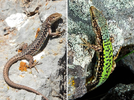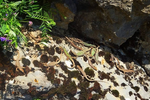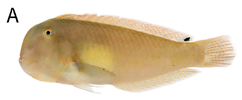You are using an out of date browser. It may not display this or other websites correctly.
You should upgrade or use an alternative browser.
You should upgrade or use an alternative browser.
NEW SPECIES FOUND!!!! Metallic purple creatures and more!
- Thread starter OakFieldAlienz444
- Start date
steven chiverton
Senior Member
- Messages
- 3,969
cant read the article as it wont alow me to read it with add blocker on so it wants to anoy me with adds in order to read it so its a trap
BlastTyrant
Senior Member
- Messages
- 2,599
Man i am tired of links, post it or write it out i don't want to fight links.
Einstein
Temporal Engineer
- Messages
- 5,413
cant read the article as it wont alow me to read it with add blocker on so it wants to anoy me with adds in order to read it so its a trap
You should try uBlock Origin. It allows you to temporarily zap any blocking popup that won't let you access content. I use that feature all the time.
- Messages
- 8,561
Man i am tired of links, post it or write it out i don't want to fight links.
I'll see what I can do after work tonight.
steven chiverton
Senior Member
- Messages
- 3,969
You should try uBlock Origin. It allows you to temporarily zap any blocking popup that won't let you access content. I use that feature all the time.
[/tried it it works thanks
Last edited:
steven chiverton
Senior Member
- Messages
- 3,969
i did after you told me the first time and it worked and i posted that but its gone missing
- Messages
- 8,853
You should try uBlock Origin. It allows you to temporarily zap any blocking popup that won't let you access content. I use that feature all the time.
Need that for the phone
- Messages
- 8,561
Mountain creature with rows of extra ‘eyes’ found lurking in rocks. It’s a new species.
Stretched out on a mossy rock within the country of Georgia, a multi-colored mountain creature basked in the sunshine. But it wasn’t alone. Researchers ventured into the disputed territory of South Ossetia on expeditions in 2015 and 2017, according to a study published Aug. 29 in the Russian Journal of Herpetology. While searching the area around a mountain lake, the brightly colored reptile, and its companions, caught their attention.
The lizards were found lurking among the rocks, the study said. Researchers captured 23 specimens and, after taking a closer look, realized they had discovered a new species: Darevskia arribasi, or Arribas’ rock lizard Arribas’ rock lizards, which can reach about 7.5 inches in size, are “small” compared to other related species, researchers said. Females are larger than males, but males are more colorful.
Female Arribas’ rock lizards are brown with black and brown blotches down their back, photos show. Males are vibrant, almost neon green, with black patches on their back. Photos show both have pointed claws that seem to help the animals cling to the rocks.

On their undersides and groins, Arribas’ rock lizards have an orange-yellow coloring, researchers said. Along their sides, the lizards have rows of extra “eyes.” These “eyes” are “individual scales” with a “bright” blue coloring,” the study said. Arribas’ rock lizards live in rocky outcroppings in alpine forests and meadows, researchers said. The species has only been found in South Ossetia but might live in nearby regions.

Researchers named the new species after Oscar Arribas, a “famous” and “outstanding” herpetologist who studies rock lizards. Arribas’ rock lizards were identified by their size, color and scale patterns, the study said. DNA analysis found the new species had between about 3% and 5% genetic divergence from other rock lizard species. The research team included Boris Tuniyev, T. V. Petrova, Konstantin Yu Lotiev.
Stretched out on a mossy rock within the country of Georgia, a multi-colored mountain creature basked in the sunshine. But it wasn’t alone. Researchers ventured into the disputed territory of South Ossetia on expeditions in 2015 and 2017, according to a study published Aug. 29 in the Russian Journal of Herpetology. While searching the area around a mountain lake, the brightly colored reptile, and its companions, caught their attention.
The lizards were found lurking among the rocks, the study said. Researchers captured 23 specimens and, after taking a closer look, realized they had discovered a new species: Darevskia arribasi, or Arribas’ rock lizard Arribas’ rock lizards, which can reach about 7.5 inches in size, are “small” compared to other related species, researchers said. Females are larger than males, but males are more colorful.
Female Arribas’ rock lizards are brown with black and brown blotches down their back, photos show. Males are vibrant, almost neon green, with black patches on their back. Photos show both have pointed claws that seem to help the animals cling to the rocks.

On their undersides and groins, Arribas’ rock lizards have an orange-yellow coloring, researchers said. Along their sides, the lizards have rows of extra “eyes.” These “eyes” are “individual scales” with a “bright” blue coloring,” the study said. Arribas’ rock lizards live in rocky outcroppings in alpine forests and meadows, researchers said. The species has only been found in South Ossetia but might live in nearby regions.

Researchers named the new species after Oscar Arribas, a “famous” and “outstanding” herpetologist who studies rock lizards. Arribas’ rock lizards were identified by their size, color and scale patterns, the study said. DNA analysis found the new species had between about 3% and 5% genetic divergence from other rock lizard species. The research team included Boris Tuniyev, T. V. Petrova, Konstantin Yu Lotiev.
- Messages
- 8,561
Orange-eyed sea creature purchased at local market turns out to be new species.

Scientists found an orange-eyed ocean animal at markets in the Philippines and discovered a new species, a study said. Photo shows a representative market. Photo from Emile Guillemot via Unsplash
Surrounded by sellers and their wares, an orange-eyed sea creature sat at a local market in the Philippines. It had a brightly colored body, “metallic” spots and a price on its head. Scientists visiting the market bought the animal — and discovered it was a new species. Kent Elson Sorgon bought a fish from a public market on Bohol Island in 2018, according to a study published Sept. 4 in the journal Raffles Bulletin of Zoology. He recognized that it was a razor wrasse fish, but it didn’t match any known species.
The fish from the market had a “large” black and white ocellus, or eyespot, at the very end of its dorsal fin, the study said. No other razor wrasse fish had this marking. Intrigued, researchers started looking for more fish specimen with these “distinctive” features. They bought six more from fish markets on other Filipino islands and found two preserved fish in museum collections in Australia, the study said.
Researchers took a closer look at these fish and realized they had discovered a new species: Iniistius bakunawa, or the eclipse-spot razor wrasse fish. The eclipse-spot razor wrasse fish have an “extremely” flat body that is “pale yellowish to jade green” in color, researchers said. Their dorsal fin has “metallic” spots of “yellowish green,” blue and orange. The fish is known to reach about 6.8 inches in size.
Photos show the rainbow-colored fish. It has a rectangular, block-shaped head and bright orange eyes. Its body and fins are covered in a ripple-like pattern of white, orange and blue bands. The black and white eyespot is visible on the end of the fish’s top fin.

An Iniistius bakunawa, or eclipse-spot razor wrasse fish, from a market on Panay Island, Philippines. The box and lines highlight the black and white eyespot. Photo from H. Motomura
Because researchers discovered the eclipse-spot razor wrasse fish from local markets and archives, they know nothing about its natural habitat or behavior. Other species of razor wrasse are known to live in “sandy habitats such as sea-grass meadows or wide sand channels away from coral reefs,” the study said. These habitats, however, are “often overlooked” by divers and during scientific surveys.
Those related fish are also known to “plunge headfirst” into the sand “and bury themselves” by rapidly wiggling “when startled or in the presence of predators,” the study said. Researchers don’t know if the eclipse-spot razor wrasse fish has this escape mechanism.

A recently dead Iniistius bakunawa, or eclipse-spot razor wrasse fish, from a market on Cebu Island, Philippines. Photo from J.T. Williams.
The new species was found at markets on the Filipino islands of Bohol, Cebu, Jolo and Panay and in archive collections in Western Australia. It likely “occurs elsewhere in the Indo-West Pacific,” the study said. Researchers named the new species after Bakunawa, “a serpentine or draconic figure in Visayan mythology believed to be responsible for causing an eclipse by devouring the moon.” The name stems from the black and white eyespot on the fish’s fin.
The Visayan people are “any of three ethnolinguistic groups of the Philippines,” according to Britannica. The new species was identified by its fins and body shape, scale pattern and coloring, the study said. Researchers did not provide a DNA analysis of the new species. The research team included Kent Elson Sorgon, Yi-Kai Tea, Jasmin Meren and Cleto Nañola Jr.

Scientists found an orange-eyed ocean animal at markets in the Philippines and discovered a new species, a study said. Photo shows a representative market. Photo from Emile Guillemot via Unsplash
Surrounded by sellers and their wares, an orange-eyed sea creature sat at a local market in the Philippines. It had a brightly colored body, “metallic” spots and a price on its head. Scientists visiting the market bought the animal — and discovered it was a new species. Kent Elson Sorgon bought a fish from a public market on Bohol Island in 2018, according to a study published Sept. 4 in the journal Raffles Bulletin of Zoology. He recognized that it was a razor wrasse fish, but it didn’t match any known species.
The fish from the market had a “large” black and white ocellus, or eyespot, at the very end of its dorsal fin, the study said. No other razor wrasse fish had this marking. Intrigued, researchers started looking for more fish specimen with these “distinctive” features. They bought six more from fish markets on other Filipino islands and found two preserved fish in museum collections in Australia, the study said.
Researchers took a closer look at these fish and realized they had discovered a new species: Iniistius bakunawa, or the eclipse-spot razor wrasse fish. The eclipse-spot razor wrasse fish have an “extremely” flat body that is “pale yellowish to jade green” in color, researchers said. Their dorsal fin has “metallic” spots of “yellowish green,” blue and orange. The fish is known to reach about 6.8 inches in size.
Photos show the rainbow-colored fish. It has a rectangular, block-shaped head and bright orange eyes. Its body and fins are covered in a ripple-like pattern of white, orange and blue bands. The black and white eyespot is visible on the end of the fish’s top fin.

An Iniistius bakunawa, or eclipse-spot razor wrasse fish, from a market on Panay Island, Philippines. The box and lines highlight the black and white eyespot. Photo from H. Motomura
Because researchers discovered the eclipse-spot razor wrasse fish from local markets and archives, they know nothing about its natural habitat or behavior. Other species of razor wrasse are known to live in “sandy habitats such as sea-grass meadows or wide sand channels away from coral reefs,” the study said. These habitats, however, are “often overlooked” by divers and during scientific surveys.
Those related fish are also known to “plunge headfirst” into the sand “and bury themselves” by rapidly wiggling “when startled or in the presence of predators,” the study said. Researchers don’t know if the eclipse-spot razor wrasse fish has this escape mechanism.

A recently dead Iniistius bakunawa, or eclipse-spot razor wrasse fish, from a market on Cebu Island, Philippines. Photo from J.T. Williams.
The new species was found at markets on the Filipino islands of Bohol, Cebu, Jolo and Panay and in archive collections in Western Australia. It likely “occurs elsewhere in the Indo-West Pacific,” the study said. Researchers named the new species after Bakunawa, “a serpentine or draconic figure in Visayan mythology believed to be responsible for causing an eclipse by devouring the moon.” The name stems from the black and white eyespot on the fish’s fin.
The Visayan people are “any of three ethnolinguistic groups of the Philippines,” according to Britannica. The new species was identified by its fins and body shape, scale pattern and coloring, the study said. Researchers did not provide a DNA analysis of the new species. The research team included Kent Elson Sorgon, Yi-Kai Tea, Jasmin Meren and Cleto Nañola Jr.
